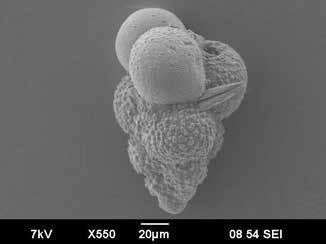
It is evident in the history of life through time that diversification of biotic communities was driven by evolutionary innovations and environmental changes. The Earth’s climate passed through several episodes of greenhouse to icehouse conditions. Organisms responded differently to the climate change at regional and global scales. The Micropalaeontology Lab at IIT Bombay is pursuing research to understand how a unicellular, marine organism, called foraminifera, responded to climate change in the Cenozoic Era, the last 65 million years of the Earth’s history.
Presently, we are studying the Eocene time that was remarkable for its extreme climate change, beginning with transient hyper- thermal events and ending with the formation of ice-sheets in Antarctica. There were varied response to global warming by different groups of foraminifera. While it lead to extinction of a large number of benthic foraminifera in deep sea the shallow water foraminifera were characterised by a low diversity, dwarfed and opportunistic taxa (Fig. 1).
Interestingly, warming coincides with an extensive development of carbonate rocks made of the accumulations of a group of benthic foraminifera that increased in diversity, shell size and adult dimorphism in response to the global warming of the Eocene (Fig. 2).
We are trying to develop proxies for the palaeobiology of these foraminifera to know what made them so special to flourish in the extreme climate of the Eocene.It is equally intriguing that these carbonates are the reservoirs of hydrocarbons in our country (Fig. 3).
The application of our research involves characterisation of the carbonate reservoirs including their microfacies, palaeo- environmental interpretation and sequence stratigraphic framework.
Prof. P K Saraswati
